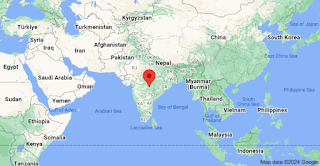India's Geographic Location: A Cornerstone of Global Significance
Nestled in the heart of South Asia, India's geographic location serves as a pivotal point connecting diverse cultures, economies, and geopolitical interests. Spanning across 3.2 million square kilometers, India's territory encompasses a rich tapestry of landscapes, from the snow-capped Himalayas in the north to the sun-kissed beaches of the Indian Ocean in the south. This vast expanse not only defines India's physical boundaries but also underscores its strategic importance on the world stage.Strategic Location:
Situated at the crossroads of the Indian Ocean, Arabian Sea, and the Bay of Bengal, India commands a strategic position in global maritime trade routes. Its coastline stretches over 7,500 kilometers, offering access to major shipping lanes that facilitate trade between Europe, Africa, the Middle East, and East Asia. The Arabian Sea and the Bay of Bengal serve as gateways to vital energy resources, with India emerging as a key player in the energy dynamics of the region.Moreover, India's proximity to vital chokepoints such as the Strait of Malacca and the Gulf of Aden enhances its geostrategic significance. Control over these maritime passages not only influences global trade but also shapes regional security dynamics, making India a linchpin in ensuring maritime stability and security.
Regional Influence:
India's geographic location also bestows upon it a unique position as a bridge between South Asia, Central Asia, and Southeast Asia. Bordered by eight countries, including Pakistan, China, Nepal, Bhutan, Bangladesh, and Myanmar, India serves as a linchpin for regional cooperation and connectivity initiatives. Its extensive land borders provide avenues for cultural exchange, economic integration, and diplomatic outreach, fostering ties with neighboring nations while navigating complex geopolitical landscapes.
Furthermore, India's geographical diversity, ranging from the fertile plains of the Ganges basin to the rugged terrain of the Himalayas, underscores its role as a biodiversity hotspot. This ecological richness not only sustains diverse ecosystems but also supports agricultural productivity, water resources, and ecosystem services crucial for the well-being of millions in the region.
Economic Dynamism:
India's geographic location acts as a catalyst for its economic dynamism, driving trade, investment, and connectivity initiatives across the globe. As one of the fastest-growing major economies, India's strategic location provides it with a competitive edge in harnessing the potential of regional and global markets. The presence of major ports along its coastline facilitates maritime trade, while extensive road and rail networks connect hinterlands to urban centers, bolstering domestic commerce and infrastructure development.Furthermore, India's geographic diversity contributes to its agricultural prowess, with fertile plains supporting a wide array of crops and agro-climatic zones enabling year-round cultivation. This agricultural abundance not only caters to domestic food security but also positions India as a significant player in global food markets.
In conclusion, India's geographic location serves as a cornerstone of its global significance, shaping its strategic, economic, and diplomatic pursuits. Positioned at the nexus of diverse civilizations and trade routes, India continues to play a pivotal role in fostering regional cooperation, enhancing maritime security, and driving economic growth in the 21st century. As the world navigates through complex geopolitical challenges and economic transformations, India's geographic centrality remains an enduring asset, anchoring its position as a vibrant and indispensable actor on the world stage.




